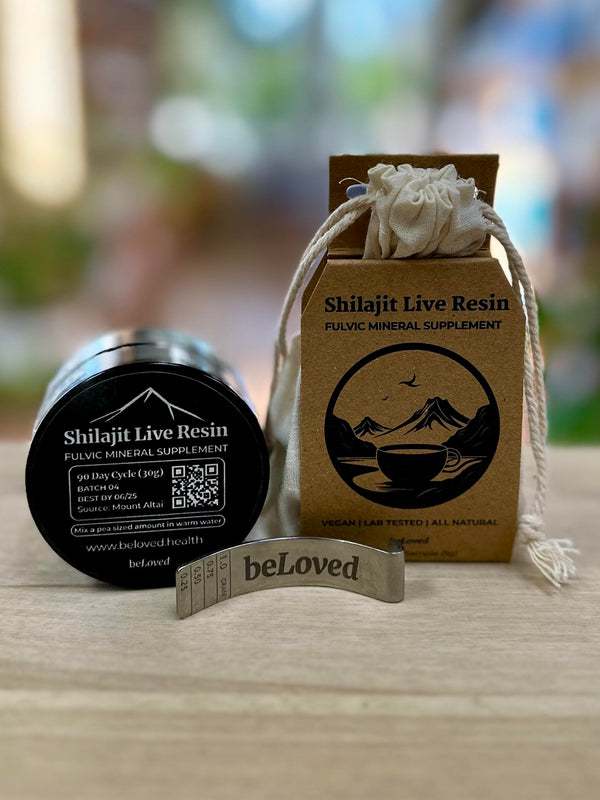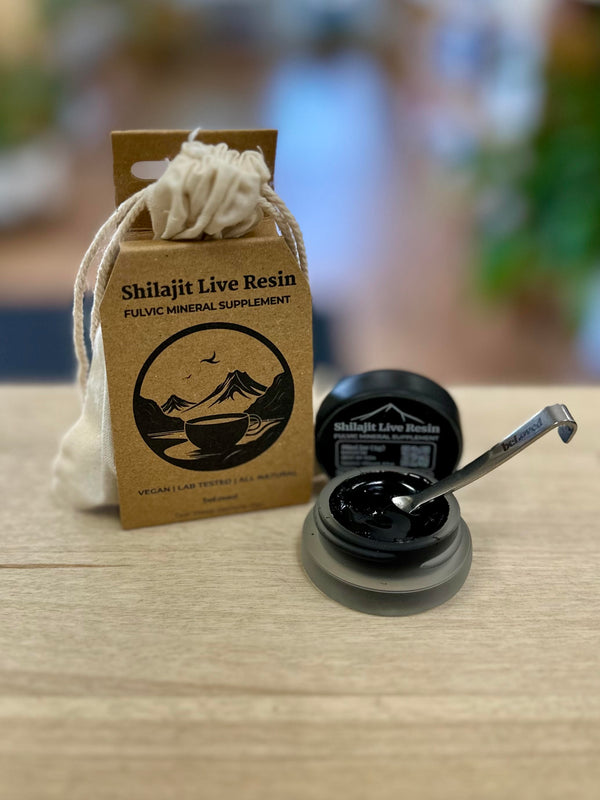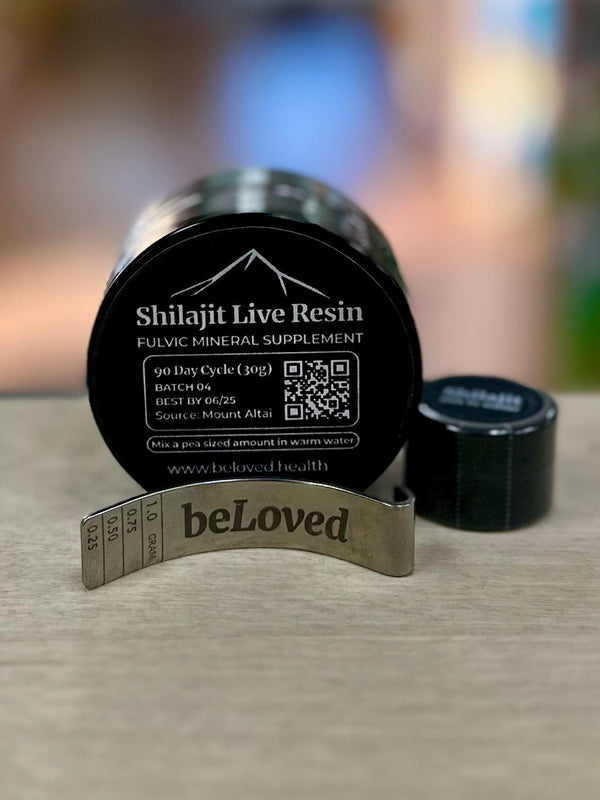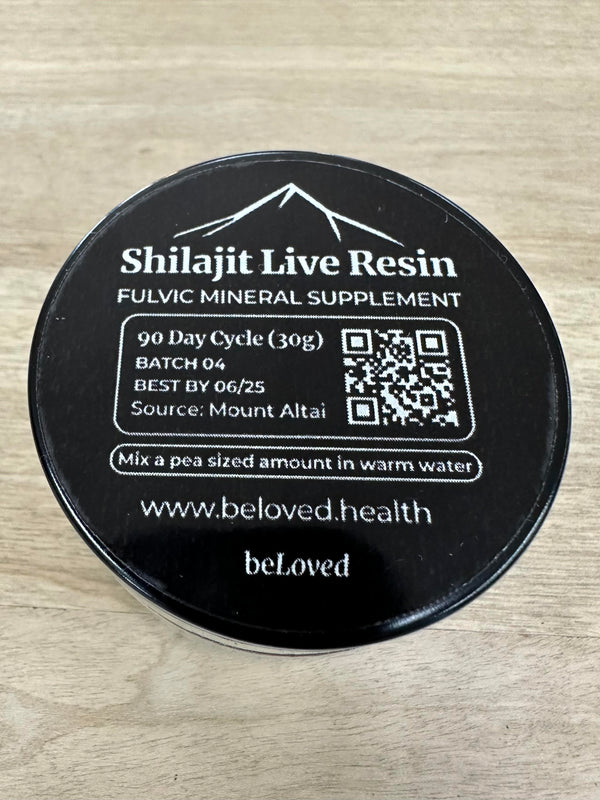Sourced from Mount Altai in Mongolia. Batch tested for quality and safety.
Shilajit is a naturally occurring substance that’s often found in the high-altitude regions of the Himalayas and other mountain ranges. It develops over centuries from the slow decomposition of certain plants and organic materials. The resulting product is a sticky, tar-like substance that’s rich in various beneficial compounds, including fulvic acid, humic acid, and numerous trace minerals.
Shilajit has been traditionally used in Ayurvedic medicine — the ancient Indian system of medicine. It’s believed to offer several health benefits, such as enhancing physical performance and endurance, improving cognitive function, supporting the immune system, and promoting overall vitality.
The bioactive compounds in Shilajit contribute to its therapeutic properties:
Fulvic Acid: This primary active ingredient helps transport nutrients deep into the cells. It also assists in balancing electrolytes, enhancing digestion, and promoting brain health.
Humic Acid: This compound supports the immune system and overall well-being.
Trace Minerals: Shilajit is rich in trace minerals, which are essential for various bodily functions.
Despite the traditional uses and some scientific evidence supporting the health benefits of Shilajit, more comprehensive research is required to validate these claims fully. It’s important to note that Shilajit should be consumed with caution due to potential side effects and interactions with other substances, so it’s advisable to consult a healthcare provider before starting a Shilajit supplement regimen.
Traditional Uses
Shilajit has been used in traditional medicine systems, especially in Ayurveda, for centuries. Here are some of its traditional uses:
Rejuvenation and Anti-Aging: In Ayurveda, Shilajit is known as a “Rasayana” or rejuvenating substance. It’s believed to slow down the aging process, rejuvenate the body and mind, and extend lifespan.
Enhancing Physical Performance: Shilajit has been traditionally used to enhance strength and stamina, making it popular among athletes and those performing physical labor.
Mental Function and Mood: Shilajit is believed to support cognitive function and improve symptoms of anxiety and depression. It’s traditionally used for enhancing memory and overall brain function.
Managing Diabetes: Ayurvedic practitioners have used Shilajit for managing diabetes, as it’s thought to help regulate blood sugar levels.
Supporting Sexual Health: Shilajit has been used to enhance fertility, particularly in men, and to treat sexual dysfunction.
Immune Support: Shilajit is believed to bolster the immune system, helping the body fight off infections and diseases.
Detoxification: It is traditionally used for its detoxifying effects, as it’s believed to help remove toxins from the body.
Bone and Joint Health: Shilajit has been used to support bone and joint health, with some practitioners using it to treat conditions like osteoarthritis.
Remember, while these traditional uses of Shilajit are significant, they are based on historical and anecdotal evidence. Modern scientific research is still exploring the potential health benefits of Shilajit, and while some studies support these uses, more comprehensive clinical trials are needed. Always consult a healthcare provider before starting any new supplement regimen, especially if you have underlying health conditions or are taking other medications.
Shilajit is not “made” in the conventional sense, but rather, it forms naturally over centuries. The process of Shilajit formation involves a complex series of geological and biological activities. Here are the steps:
1. Origin in Plants: Shilajit begins as plant matter, including flowers, leaves, and other organic materials. These plants grow in the high altitude regions, often between rocks and crevices in the Himalayas, Altai, Caucasus, and other mountain ranges.
2. Decomposition: Over time, this plant matter decomposes due to microbial activity and the intense environmental conditions, like extreme cold and heat, experienced in these high-altitude regions.
3. Compression: As centuries pass, geological shifts and movements cause pressure to build upon these layers of decomposed plant matter. This pressure, combined with the distinct microbial activity, results in a dense, sticky, tar-like substance — Shilajit.
4. Natural Exudation: During the warmer summer months, Shilajit naturally oozes out of the cracks in the rocks. It’s then collected by hand or scraped from the rocks.
5. Purification: Once collected, Shilajit must be purified to remove any contaminants like dirt, rocks, or other materials. Traditional purification processes involve dissolving the raw Shilajit in water, filtering out impurities, and then evaporating the water to yield a purified resin.
It’s crucial that Shilajit is sourced and purified responsibly. Improper purification can result in contaminants, which can be harmful if ingested. Always buy Shilajit from a reputable source to ensure it’s been correctly and safely processed.
Remember, while Shilajit has been used for centuries in traditional medicine and is believed to have various health benefits, always consult a healthcare provider before starting a new supplement.






